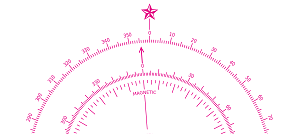BlueSeas
Marine Binoculars - Some Observations
Marine Binoculars - Personal Insights
Floatation
Most marine binoculars DO NOT FLOAT, so a floatation strap is a wise investment. The vulgarities and invectives emanating from your mouth when you (or someone else) drops your glasses over the side would make a drunken sailor blush. A $30.00 floatation strap makes for mighty cheap insurance against loss. Additionally most floatation straps are more comfortable to wear around your neck than the normally thin neck straps that accompany most marine binoculars.
Cleaning and Storage
Remember that your binoculars will be used in a marine environment. Salt deposits from seawater splashing and spray can scratch and damage the lenses of your binoculars just as fast as dust and dirt will do to the binoculars of our shore bound friends.
Cleaning
Step 1 - Begin the process by cleaning the exterior body portions of your binoculars first. Make sure that you have the lens caps in place so that you do not accidentally scratch or transfer any contaminants to the lenses.
Using a soft brush and a cloth dampened in fresh water, completely clean the exterior of your binoculars. Since marine binoculars should be waterproof, you may combine the above with flushing the exterior with a "gentle" stream of fresh water.
Step 2 - Once you have cleaned the exterior you can remove the lens caps and using a gentle stream of water to dissolve and float away any salt, use a lens brush to remove any remaining loose dust and dirt from the lenses.
After any salt residue has been removed, moisten a clean cotton ball or a Q-Tip with clean fresh water (distilled water is preferred) and using a circular motion beginning at the center of the lens gently wipe the lenses out to the outer edges.
Another choice is lens cleaning solution approved by your binoculars’ manufacturer. Remember, not all lens cleaning solutions are created equal. The use of unapproved lens cleaning solutions or solutions designed for cleaning your windows at home may have a harmful effect on the lens coatings of your binoculars.
A micro-fiber lens cloth may also prove effective if approved by the manufacturer. If you use a micro-fiber cloth it should be stored with your binoculars and never used for any other purpose.
DO NOT use toilet paper, paper towels, or tissue paper to clean your lenses.
Storage
After you have thoroughly cleaned your glasses, don’t forget to store them away in that foam filled hard sided case that you bought just for that purpose. You did buy one didn't you?
With thanks to "Captain Larry" for proofreading and reminding me that when I am done, they need to be cleaned and put away.
Caveat Emptor!
There are a number of manufacturers that produce good quality binoculars, but even more important to realize, there are many more that produce junk in fancy packaging.
For marine use, binocular makers such as Bushnell, Nikon, Carl Zeiss to name just a few, are reputable manufacturers. Currently, Fujinon and Steiner are probably recognized as being the top of the line in marine glasses. Selecting the appropriate model from either of these two companies will provide you with some of the finest optics on the water.
Regardless of which manufacturer you decide to go with, researching which pair of binoculars is right for you will take a little time. If you are serious about purchasing a good pair of marine binoculars that will last a lifetime, make the time!
Some Personal Observations!
You have just purchased YOUR ideal pair of binoculars and you have a bit of money invested in them; so what can you expect now?
The "gut sinking feeling" as you realize that everyone on the boat always seems to be reaching for YOUR glasses.
The pain as you "sit quietly biting your tongue" while you watch your guests screw off the ocular eyepieces attempting to adjust the focus.
The amazing lack of blood as you "chew on your knuckles" while you watch your best fishing buddy set your glasses down on the gunwale of the boat just out of your reach and they slowly slide off over the side.
"Blood pressure increases" when you realize that you are the only person on the boat who seems to understand what the lens covers are for.
I could go on, but I think you’re getting the picture. So, I offer three solutions that I have tried:
- Spend an extra $50.00 to $100.00 and buy (1 or 2) additional pairs of inexpensive binoculars for the guests and the kids.
- Practice your gruffest voice and then say "That better be the winch handle you’re reaching for!"
- And when all else fails, show them the electrical arc across the contacts on your handheld TASER.
Some out there may have found other or better solutions. If so, I would love to hear about them. Please send us an e-mail. Any really great methods we hear of we will post on this page to share the benefits or the laughs with others.
Binoculars Buyers Checklist
A checklist that you may find useful in selecting YOUR perfect pair of marine binoculars. This check list is available for download with the "Model" columns left blank for your use. Marine Binoculars Buyers Checklist Download
